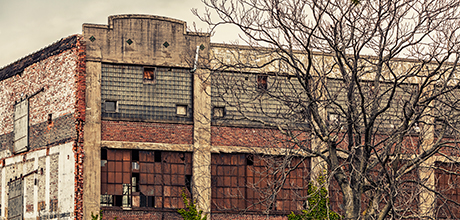Much more than just “drug houses”; State grants to fund commercial building demolition would propel county land banks as key drivers of Ohio’s economic development
Jeffry D. Harris
Bricker & Eckler LLP
 In late April 2021, a legislative committee in the Ohio House held its second hearing to consider creating a $100 million grant program, exclusively for county land banks, to fund commercial building demolition. Ohio’s land bank statutes are recognized as a national model, uniquely providing an opt-in for county commissioners to direct tax collections to fund their county land banks’ activities. That revenue model, coupled with allocations from the state’s Hardest Hit Fund (specifically, the sun-setting Neighborhood Initiative Program), allowed land banks to grow in number during the past decade and thrive in addressing so-called nonproductive land in their communities.
In late April 2021, a legislative committee in the Ohio House held its second hearing to consider creating a $100 million grant program, exclusively for county land banks, to fund commercial building demolition. Ohio’s land bank statutes are recognized as a national model, uniquely providing an opt-in for county commissioners to direct tax collections to fund their county land banks’ activities. That revenue model, coupled with allocations from the state’s Hardest Hit Fund (specifically, the sun-setting Neighborhood Initiative Program), allowed land banks to grow in number during the past decade and thrive in addressing so-called nonproductive land in their communities.
But federal and state funding partners to date have been laser-focused on acquiring and demolishing vacant and abandoned residential properties. What to do with the proverbial long-abandoned former factory on the [north, south, east, west] side of town, respectively, rotting away in virtually every Ohio community? County land banks have been at a loss as to what funding sources they could access to acquire and remediate nonproductive commercial properties. Simply put, properly funding commercial building acquisition and demolition has been the purple unicorn eluding Ohio’s land banking thought leaders.
Enter House Bill (HB) 155, introduced in February by two Cleveland-area state legislators. This legislation seeks to create a new General Revenue Fund-sourced initiative at the Ohio Development Services Agency (ODSA): the Land Reutilization Nuisance Abatement Program, with $50 million appropriated for each of State Fiscal Years 2022 and 2023. Written into Ohio’s community improvement corporation (CIC) laws – county land banks technically operate as CICs in Ohio – the program would provide grants to fund “the abatement of nuisance structures on blighted parcels,” with land banks to locally match, dollar-for-dollar, any awarded ODSA funds.
A key feature of HB 155 is in its reference to general provisions of Ohio law. Namely, “blighted parcel” is defined according to dilapidated and unsafe conditions, irrespective whether the property is used for residential or commercial purposes (see Ohio Revised Code Section 1.08(B)).
The House Committee’s reception to HB 155 in late April was notable for its active dialogue among members of both parties as to how county land banks advance development in their communities. If enacted, HB 155 would be the very sharp and long sought-after arrow in the quiver of those communities in Ohio with an active county land bank to actively address shuttered and forlorn factories and commercial complexes.
The Public Finance team of attorneys at Bricker & Eckler LLP is available to help county land bank officials track and understand this proposed funding opportunity. We welcome local elected and county land bank officials to reach out to obtain more information.
_______________________________________________________________________________________________________________
This is for informational purposes only. It is not intended to be legal advice and does not create or imply an attorney-client relationship.
OEDA Congratulates Graduates of the 2025 Ohio Basic Economic Development Course
OEDA Congratulates Graduates of the 2025 Ohio Basic Economic Development Course DUBLIN, OH – The Ohio Economic Development Association (OEDA) proudly congratulates the more than 85 participants who successfully completed the 2025 Ohio Basic Economic Development Course...
OEDA Begins Strategic Planning Amid Record Growth + Program Expansion
FOR IMMEDIATE RELEASE RFP now open for OEDA’s next strategic plan; proposals due July 1, 2025 COLUMBUS, OH; Tuesday, June 3, 2025 — The Ohio Economic Development Association (OEDA) has released a Request for Proposals (RFP) to develop a new strategic plan, its first...
OEDA seeks host communities for its Annual Summit
For Immediate Release OEDA seeks host communities for its Annual Summit For the first time, location proposals sought for 400+ attendee conference COLUMBUS, OHIO – TUESDAY, NOVEMBER 12 – Today, the Ohio Economic Development Association (OEDA) announced that is...